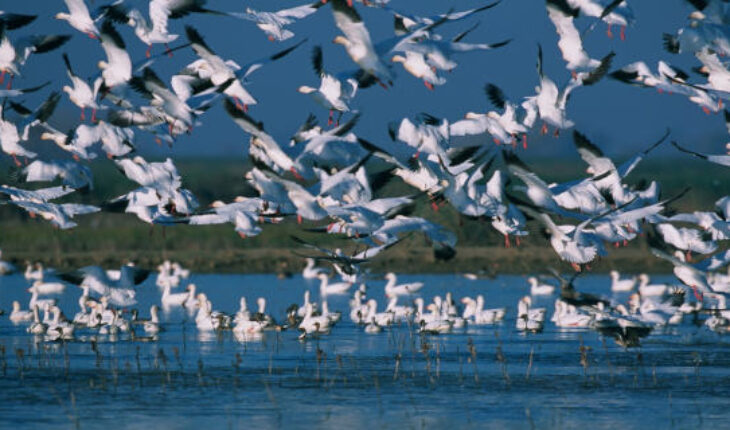Hundreds of migratory birds from Europe and Western countries have arrived in the wetland reserves of Jammu and Kashmir, as winter approaches. The winged visitors have a longstanding tradition of seeking refuge in Kashmir during the harsh winter months elsewhere, marking a centuries-old migration pattern.
Last year alone, around twelve lakh migratory birds journeyed from Eastern Europe and Central Asia to Kashmir’s wetlands, a testament to the area’s appeal as a winter haven.
Wildlife authorities collaborate with various agencies to conduct annual censuses tracking these avian guests, highlighting the region’s significance in providing a relatively hospitable environment compared to their freezing northern hemisphere habitats.
The birds, originating from places like Siberia, China, the Philippines, Eastern Europe, and Japan, start arriving in October, seeking respite from extreme cold conditions. The wetlands of Kashmir, including Hokersar, Wular Lake, Haigam, Shalbugh, among others, become bustling habitats for these visitors until March when they return to their homelands.
However, the persistent threat of poaching has been a concern for both the migratory birds and the Wildlife Department. Efforts have been made to mitigate this threat, with increased vigilance and regular checks conducted to curb illegal hunting activities. Measures to maintain adequate water levels in the wetlands have also been undertaken to ensure a conducive environment for the visiting birds.
Recently, two wetlands in Kashmir—Shallabugh in Ganderbal district and Haigam in Srinagar—were designated as Ramsar sites, adding to the list of internationally important wetland sites in the region.
Ramsar sites, named after the convention established in 1971, aim to protect and sustainably use wetland resources through international cooperation and national conservation measures.
The addition of these sites brings the total number of Ramsar sites in Jammu and Kashmir to five.






